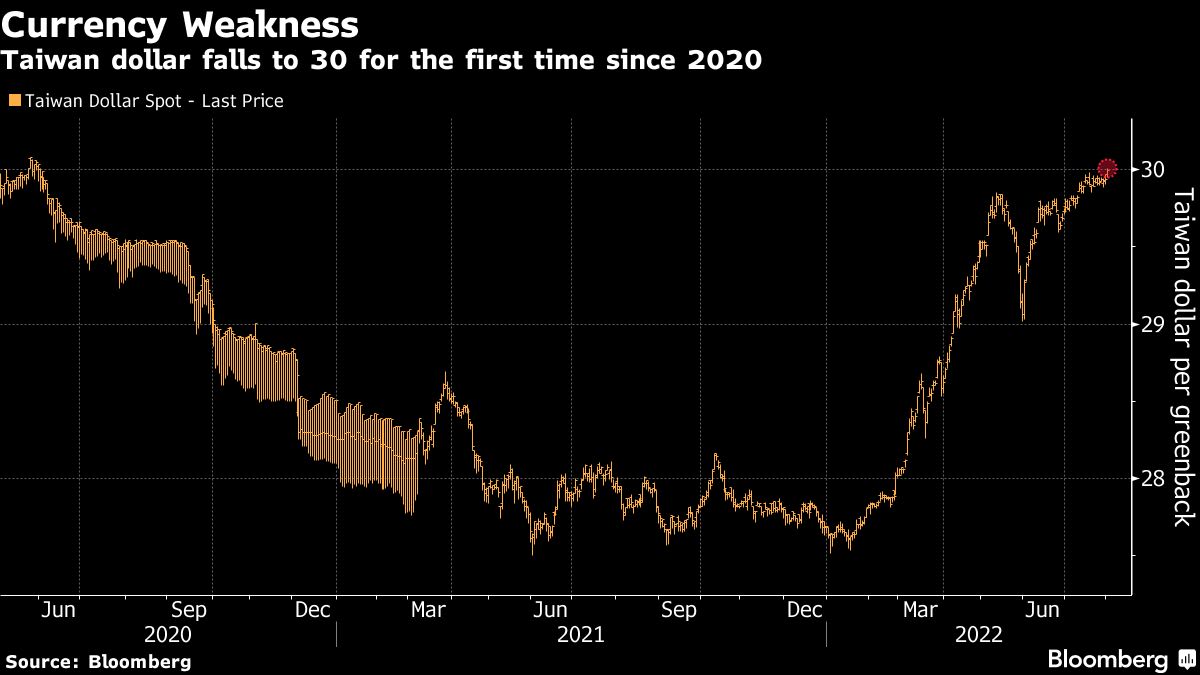
(Bloomberg) -- The Taiwan dollar slid past a key psychological level of 30 per US dollar for the first time since June 2020 as a double whammy of heightened geopolitical risks and weaker economic growth weigh on the currency.
The currency fell as much as 0.2% to 30.008 per dollar. That’s because sentiment turned cautious amid US House Speaker Nancy Pelosi’s potential visit to the island and as data showed manufacturing activity was the weakest since May 2020.
“There may be some political risk priced into the Taiwan dollar due to Pelosi’s visit to Asia,” said Khoon Goh head of Asia research at Australia & New Zealand Banking Group. “This is the main reason why the Taiwan dollar has underperformed in the region despite the greenback being weaker,” he said, adding that the surprise drop in Taiwan’s purchasing managers index further into contraction territory also probably weighed on the currency.
The US House Speaker left Taiwan out of the itinerary in a statement on Sunday announcing the trip, which will also include stops in Japan, South Korea and Malaysia. Yet speculation is still rife that Pelosi would visit Taiwan at some point this week, risking a heavy-handed response from China, which regards the self-governing island as its territory.
“The underperformance in the Taiwan dollar is reflecting heightened geopolitical risk, rather than fundamentals,” Frances Cheung, rates strategist at Oversea-Chinese Banking Corp. in Singapore. “Unfortunately this kind of sentiment appears to be self-fulfilling in that the resulting equity outflows are putting pressure on the local currency.”
Taiwan’s currency retraced some of its early loss to trade at 29.998 per US dollar at 12:44 pm in Hong Kong. Exporters sold the greenback above 30, according to traders who are not authorized to speak publicly, while state-backed banks haven’t been seen offering dollar liquidity, they said.
However, the downside risk for the currency is high as indicated by its one-month implied volatility, which has risen in the last four sessions from a five-month low touched last week.
ING Bank NV has a bearish outlook on the currency based on fundamentals and weak demand for semiconductors. “That’s driven mainly from weak demand for smart devices due to lower purchasing power in mainland China and high inflation in US and Europe,” said Iris Pang, chief China economist at the bank.
(Updates throughout.)
More stories like this are available on bloomberg.com
©2022 Bloomberg L.P.
Author: Tania Chen